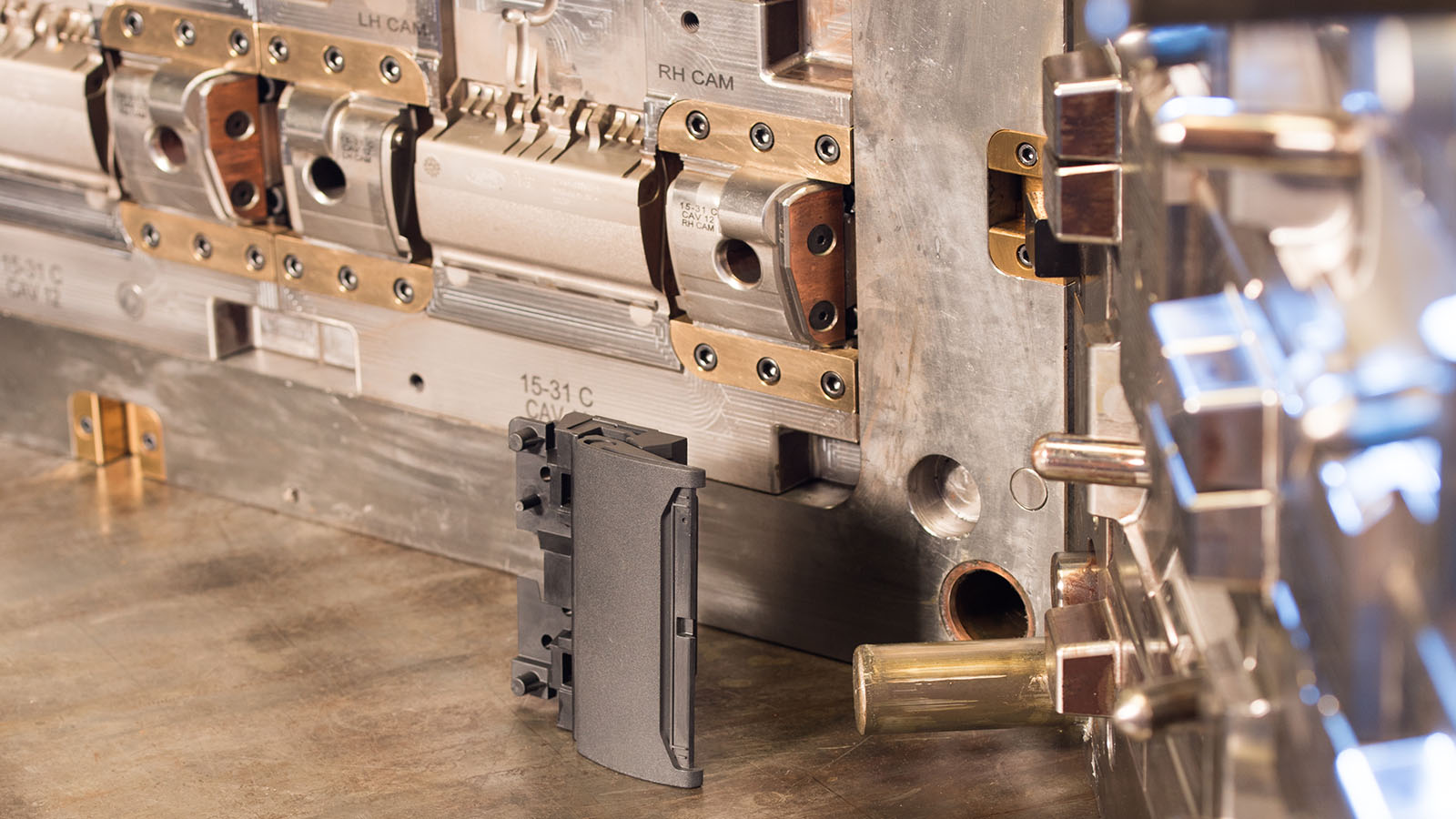Several years ago SPI (Society of Plastics Industry) introduced mold building classifications to help eliminate confusion in mold quoting. Although these classifications are not used by all end users or mold builders, they are a good starting point for creating expectations of performance. An important note is that these standards do not imply a level of craftsmanship or guarantee performance. It’s important to make sure your tool builder has the experience and a history of doing quality work.
Mold classes are specified as classes 101-105, with a class 101 mold being the highest quality. Below is a list of each mold class along, with detailed descriptions of each. This is directly from the SPI’s “Customs and Practices of the Mold Making Industry” publication.
Class 101
- Cycles: 1 Million or more
- Built for extremely high production, this is the highest priced mold and is made
with only the highest quality materials. - Detailed mold design required.
- Mold base to be minimum hardness of 280BHN.
- Molding surfaces (cavities and cores) must be hardened to a minimum of 48 R/C
range. All other details should also be hardened tool steels. - Steels moving against one another should be dissimilar and have a hardness
differential of at least 4 Rockwell “C”. - Ejection should be guided.
- Slides must have wear plates.
- Temperature control provisions to be in cavities, cores and slides wherever
possible. - It is recommended that plates and inserts containing cooling channels be of a
corrosive resistant material or treated to prevent corrosion. Corrosion in the
cooling channels decreases cooling efficiency thus degrading part quality and
increasing cycle time.
Class 102
- Cycles: Not exceeding one million
- Built for medium to high production, good for abrasive materials and/or parts
requiring cost tolerances. This is a high quality, fairly high quality, fairly high
priced mold. - Detailed mold design is required.
- Mold base to be minimum hardness of 280BHN.
- Molding surfaces (cavities and cores) must be hardened to minimum of 48 R/C
range. All other details should be made and heat treated. - Temperature control provisions to be directly in the cavities, cores and slides
wherever possible. - Parting line blocks are recommended for all molds.
Class 103
- Cycles: Under 500,000
- Built for medium production. This is a very popular mold for low to medium
production needs. Most common price range. - Detailed mold design recommended.
- Mold base must be minimum hardness of 165BHN.
- Cavity and cores must be 280BHN or higher.
- All other extras are optional.
Class 104
- Cycles: Under 100,000
- Built for low production. Used only for limited production preferably with nonabrasive
materials. Low to moderate price range. - Mold design recommended.
- Mold base can be of mild steel or aluminum.
- Cavities can be of aluminum, mild steel or any other agreed upon metal.
- All other extras are optional.
Class 105
- Cycles: Not exceeding 500
- Built for prototype mold only. This mold will be constructed in the least expensive
manner possible to produce a very limited quantity of prototypes. - May be constructed from cast material or epoxy or any other material offering
sufficient strength to produce minimum prototype pieces.
Referencing a mold class when talking to your mold builder will help clarify the intentions behind purchasing a mold. Your mold builder should have the experience to not only produce molds to class standards but with the craftsmanship to exceed these expectations.
At Basilius, we have built hundreds of class 101 molds. Many of which run at our facility and are well beyond the one million cycles expected. The bottom line is that building molds to these standards is a great starting point, but only an experienced team can make them a reality.


